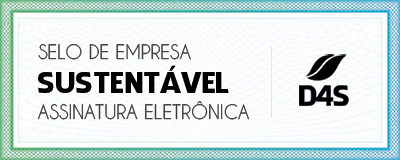
If you’re a Linux user, and in particular, Fedora, then you may be looking for ways to streamline your torrent downloads. One tool that’s worth considering is uTorrent Linux, which is an open-source BitTorrent client that can help you manage your torrents with ease. In this guide, we’ll explore the ins and outs of uTorrent Linux and related tools, so you can make the most out of your torrenting experience on Fedora. From installing the software to configuring your settings, we’ll cover everything you need to know to get started.
Torrent downloads are a popular way to share large files across the internet. However, managing torrent downloads on Linux-based systems like Fedora can be a challenging task for many users. The good news is that there are several tools available that can help streamline your torrent downloads on Fedora. In this article, we will explore one such tool – uTorrent Linux – and related tools.
uTorrent Linux is a lightweight and feature-rich BitTorrent client that is available for Linux-based systems. It is designed to offer a user-friendly interface and an efficient way of managing torrent downloads. Here’s how you can set up and use uTorrent Linux on your Fedora system:
Step 1: Install Wine
Wine is a compatibility layer that allows Windows applications to run on Linux systems. Since uTorrent Linux is based on the Windows version of uTorrent, you need to install Wine first. To do so, open the terminal and run the following command:
sudo dnf install wine
Step 2: Download uTorrent Linux
Next, download the uTorrent Linux installer from the official website. Once the download is complete, navigate to the Downloads folder in the terminal and run the following command:
wine utorrent.exe
This will launch the uTorrent Linux installer, which you can then follow to complete the installation process. Once installed, uTorrent Linux will appear in your Applications menu.
Step 3: Configure uTorrent Linux
Before you start downloading torrents, you need to configure uTorrent Linux. Launch the application and go to Options > Preferences. Here, you can adjust various settings such as download and upload speeds, download location, and more.
Step 4: Start Torrent Downloads
To start downloading a torrent file, simply click on the “+” button in uTorrent Linux and select the torrent file you want to download. You can also add a magnet link or a URL to a .torrent file.
Related Tools:
1. Deluge
Deluge is another popular BitTorrent client for Linux-based systems. It offers a similar set of features as uTorrent Linux, including support for plugins, encryption, and more. Deluge is also available for free and open-source.
2. qBittorrent
qBittorrent is a lightweight and cross-platform BitTorrent client that offers an intuitive user interface and advanced features such as RSS feed support, bandwidth scheduler, and more. qBittorrent is also available for free and open-source.
Conclusion:
If you’re looking for an efficient way to manage your torrent downloads on Fedora, uTorrent Linux and related tools offer a great solution. With its user-friendly interface and advanced features, uTorrent Linux makes it easy to download and manage torrent files on your system. By following the steps outlined in this guide, you should be able to set up and use uTorrent Linux with ease.
Effortlessly Install uTorrent on Linux using Command Line: A Step-by-Step Guide!
Are you a Linux user who wants to download and install uTorrent on your system? Look no further! In this guide, we will walk you through the steps required to effortlessly install uTorrent on Linux using command line. By following our step-by-step instructions, you’ll be up and running with uTorrent in no time. Whether you’re new to Linux or an experienced user, this guide will help you get started with uTorrent quickly and easily. So let’s get started!
If you’re a Linux user looking to download and install uTorrent, the popular BitTorrent client, you might be wondering how to do it via the command line. Luckily, the process is straightforward and can be done in just a few simple steps.
In this article, we’ll walk you through the process of installing uTorrent on Linux using the command line. Follow these steps, and you’ll be up and running in no time.
Step 1: Update Your System
Before installing any new software, it’s always a good idea to update your Linux system first. This ensures that you have the latest security patches and bug fixes installed.
To update your system, open a terminal window and type the following command:
sudo apt-get update
sudo apt-get upgrade
This will update all of the packages on your system.
Step 2: Install Required Dependencies
Next, you’ll need to install some dependencies that are required by uTorrent to run properly. These include the libssl and libssl-dev libraries.
To install these libraries, run the following command:
sudo apt-get install libssl1.0.0 libssl-dev
Step 3: Download and Install uTorrent
Now that you have all the dependencies installed, it’s time to download and install uTorrent. You can download the latest version of uTorrent for Linux from the official website (https://www.utorrent.com/downloads/linux).
Once you’ve downloaded the uTorrent package, navigate to the directory where you downloaded the file and run the following command:
tar -zxvf utserver.tar.gz
This will extract the uTorrent files to a new directory.
Next, move into the newly created directory with the following command:
cd utorrent-server-alpha-v3_3/
Finally, run the uTorrent installation script with the following command:
./utserver
This will start the uTorrent installation process. Follow the prompts to complete the installation.
Step 4: Start uTorrent
Once the installation is complete, you can start uTorrent by running the following command:
./utserver -settingspath /opt/utorrent-server-alpha-v3_3/
This will start the uTorrent server and create a configuration file in the specified directory.
Step 5: Access uTorrent Web UI
With uTorrent installed and running, you can access the web-based user interface (UI) by visiting the following URL in your web browser:
http://localhost:8080/gui/
Enter the default username and password “admin” to access the uTorrent Web UI.
Congratulations! You have successfully installed uTorrent on Linux using the command line. You can now use uTorrent to download and share your favorite files with ease.



